
Brian continues his miniseries targeting the core with single-leg/single-arm diagonals, which are perfect for those clients seeking a greater challenge with three-dimensional movement.
See 'Related Resources' below for past Functionally Fits (including the core miniseries) and other exercises and training tips.
So far, I have given you "core on the floor" exercises, so to speak. This time, I am showing you more advanced, closed-chain, three-dimensional core work using one arm and one leg.
Execution
I prefer a functional trainer for this drill. If you do not have one, use bodyweight or a light dumbbell to start out. This exercise is intended for higher-level clients/athletes who participate in activities that require three dimensional motion, such as tennis, baseball, lacrosse, volleyball, golf, etc.
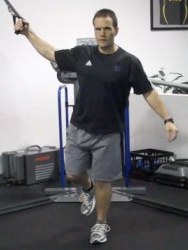 | 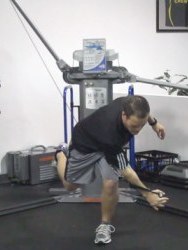 |
 | 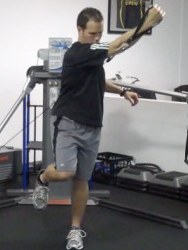 |
You may perform one to two sets of each exercise. In addition, feel free to tweak the position of the functional trainer to alter movement planes according to the clients' needs and functional goals.
Application
This exercise is a challenging way to activate the core through three-dimensional movements while significantly challenging single-leg stability. Additionally, it demands sufficient anti-rotation (deceleration) strength to maintain balance and control. This added benefit addresses hip/knee/ankle stability.
As such, I recommend little to no resistance starting out. Allow your clients to perform the movement free-form with no resistance to ensure they can demonstrate the proper arc of movement and maintain stability and form throughout.
If they are unable to do so, begin with two legs or a staggered stance with the predominant support from the lead leg (opposite the working arm), and progress slowly to single-leg support. The overall goal is not to produce fast movements with heavy load. Instead, focus on anti-rotation stability and dynamic control from head to toe.
Precautions
For safety reasons and to avoid overstressing irritable tissues, you may want to modify the exercise or exclude clientele on a case-by-case basis with the following conditions:
- Patellofemoral pain/instability
- Marked knee or hip arthritis
- Meniscus tears
- Hip labral tears
- Active lumbar disc pathology/sciatica
In addition to the patterns referenced, you can incorporate D2 flexion and D1 extension by starting in the same setup sequences and simply standing on the right leg and using the left hand with the same side of the functional trainer. See the images for D2 flexion below.
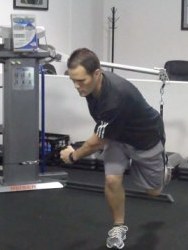 | 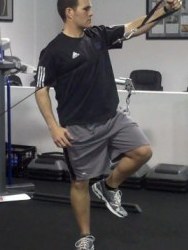 |
Brian Schiff, PT, CSCS (www.brianschiff.com) is a licensed physical therapist, respected author and fitness professional. He became a Certified Strength and Conditioning Specialist (CSCS) in 1998. In 2000, he opened his own personal training and sport-specific conditioning facility, Fitness Edge, in Dublin, Ohio. Brian has presented at several professional conferences and seminars on injury prevention and sport-specific training.
















